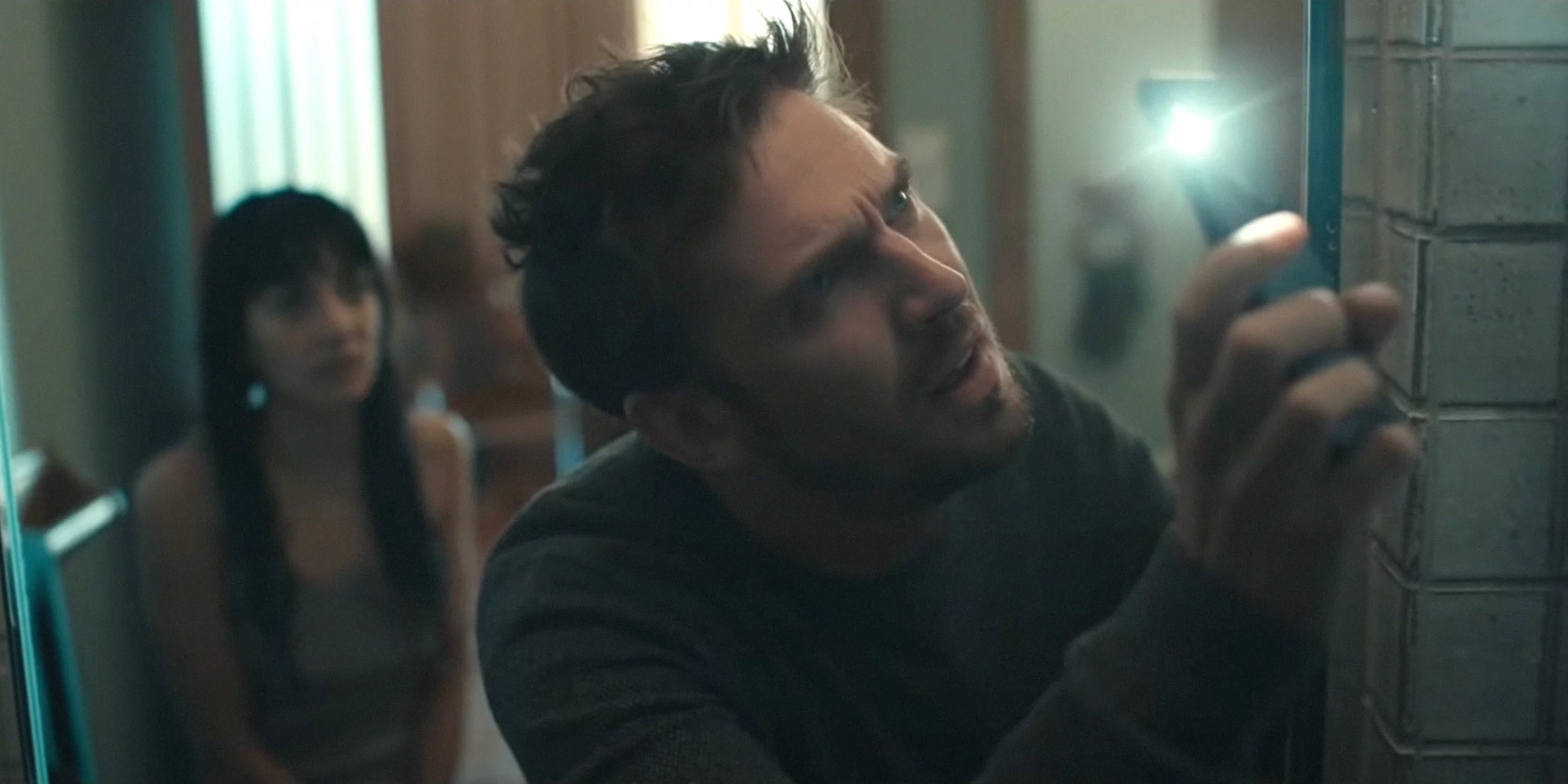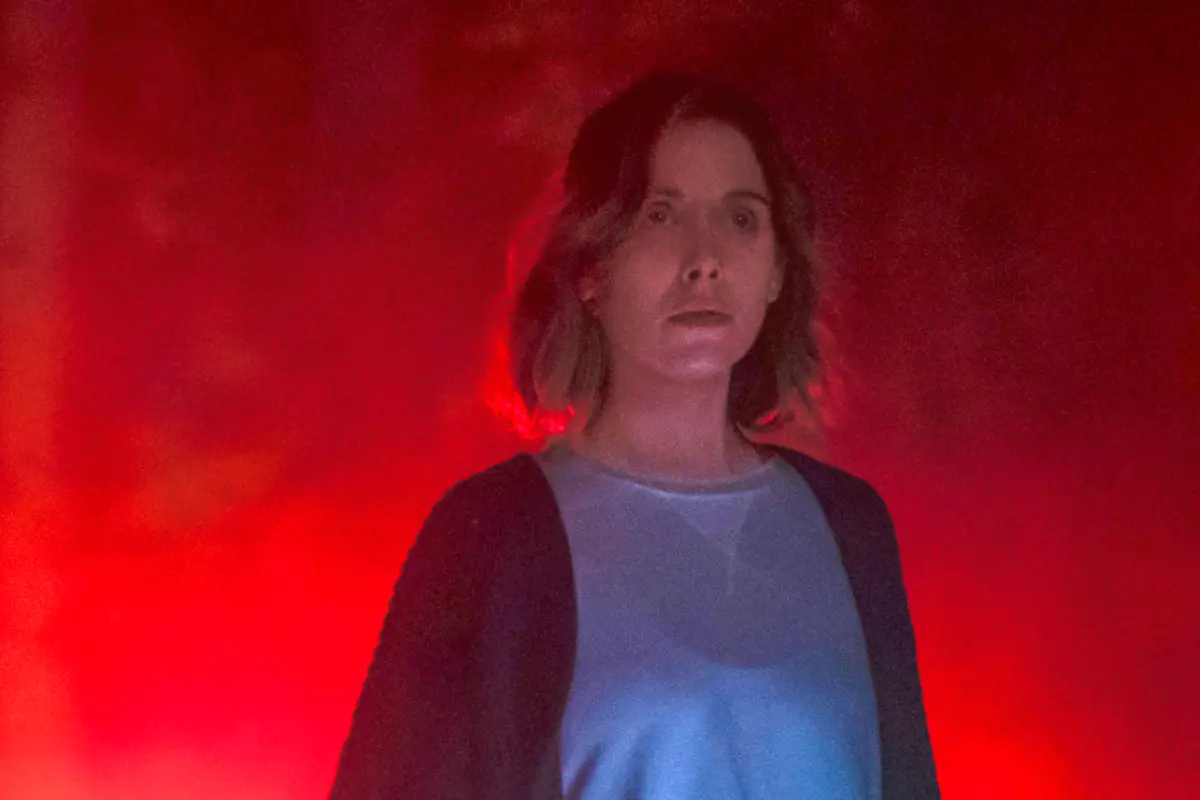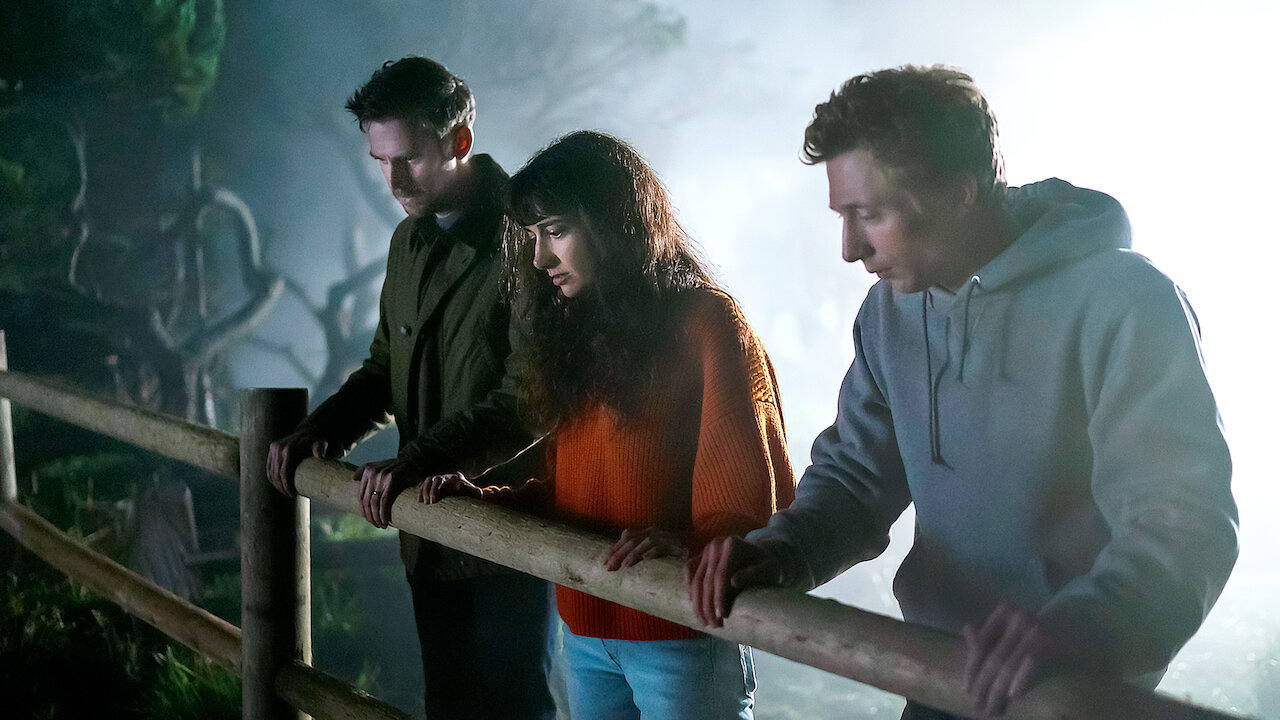Dave Franco’s directorial debut, The Rental, is a compelling indie thriller that delves into the dangers of vacationing in an unfamiliar, seemingly idyllic setting. The plot centers on two couples—Charlie and Michelle, played by Dan Stevens and Alison Brie, and Mina and Josh, played by Sheila Vand and Jeremy Allen White—who decide to take a relaxing weekend getaway.
They book a stylish house on the Pacific Northwest coast via a rental platform that closely resembles Airbnb. What starts as a fun and relaxing weekend soon spirals into a nerve-wracking nightmare as a masked killer begins stalking them in the house. With strong performances, a tightly wound script, and sharp direction, The Rental plays with suspense and modern fears, offering a chilling and thought-provoking take on the horror genre.
The film cleverly introduces a sense of foreboding right from the start, with the group’s arrival at the coastal rental. They are greeted by the property owner, Taylor, portrayed by Toby Huss, whose behavior toward Mina hints at racial prejudice. This early confrontation adds a layer of discomfort and tension to the atmosphere.
While it’s possible to dismiss Taylor’s odd reaction as just a personal quirk, it contributes to the unsettling vibe of the house. The discomfort grows when Charlie and Mina secretly engage in an affair, setting up interpersonal tensions between the characters. The combination of racial discomfort and infidelity serves as a subtle but effective setup for the terror that follows.

Uncovering the Surveillance: Cameras Exposed
As the weekend progresses, the group’s personal issues begin to surface. The real horror begins when Mina discovers a hidden camera in the shower, a revelation that suggests the house has been bugged. She confides in Charlie, but they decide to keep this discovery a secret from the others.
The knowledge of being watched, even during moments of privacy, creates an increasing sense of vulnerability and paranoia. This theme of surveillance is central to the film’s horror, tapping into the modern anxieties surrounding technology and privacy. The characters begin to question who has been watching them, leading to the growing realization that their seemingly peaceful vacation has turned into a nightmare where their every move is being recorded.
Things take a darker turn when Michelle, in a moment of concern about the hot tub, asks Taylor to return and fix it. This seemingly innocent request sets off a chain of events that escalates quickly. When Taylor arrives, Mina confronts him about the hidden cameras, suspecting he was the one who installed them.
Taylor denies any involvement and seems genuinely confused, but this interaction soon turns violent. When Josh overhears the confrontation, he becomes enraged and attacks Taylor, nearly killing him in the process. This moment of violent outburst heightens the tension among the group, turning their already fragile dynamic into a dangerous and volatile situation. The film takes a sharp turn from psychological suspense to violent confrontation.
As Taylor lies bleeding, the group is faced with the consequences of their actions. Charlie and Mina reveal to Josh and Michelle that the house is bugged, but they leave out the part about their affair. Their attempt to deal with the situation only makes things worse, as they worry about the potential fallout from their actions. The sense of dread intensifies when they realize the cameras not only captured their sexual encounter but also Josh’s violent assault on Taylor.
The situation spirals out of control, and the group becomes increasingly paranoid about their secrets being exposed. Just as they begin to discuss their next steps, the masked killer, who has been watching them throughout the day, enters the house and murders Taylor. The group’s attempt to cover up their crimes is overshadowed by the sudden appearance of a much larger threat.

A Final Pursuit: Mina’s Desperate Flight
The killer’s presence triggers a full-blown panic as the group attempts to escape. Michelle, horrified by the discovery of Charlie and Mina’s affair, decides to leave the house and head to the police. However, her escape is short-lived as the killer sets a trap for her. As she drives away, she unknowingly follows the path where the killer has prepared an ambush.
The film shifts from the claustrophobic confines of the rental house to an open pursuit through the woods. The killer, relentless in their pursuit, ultimately catches up with Michelle and kills her. As Charlie searches for Michelle, the killer then ambushes him as well, leading to Charlie’s death. The relentless nature of the killer’s pursuit adds to the sense of doom that envelops the characters, leaving the audience on edge.
With Michelle and Charlie dead, the focus shifts to the final survivor, Mina. After the brutal murders, the killer proceeds to clean up, removing all traces of their presence in the house. The scene of the killer meticulously dismantling hidden cameras and wiping away evidence is both chilling and methodical.
This act of cleanup shows that the killer is not driven by personal vendetta or emotions but by a cold, calculated desire to eliminate any trace of their crime. The killer’s face remains hidden throughout the film, adding to the mysterious and unsettling nature of the threat. The absence of closure regarding the killer’s identity and motives heightens the sense of unease, leaving the audience to speculate about their true intentions.
One of the key themes explored in The Rental is the fear of privacy invasion. The film taps into real-world concerns about the erosion of personal privacy in a world increasingly dominated by technology. Director Dave Franco, along with co-writer Joe Swanberg, wanted to explore the unsettling possibility that renting someone else’s home could expose you to hidden surveillance.
This modern anxiety is amplified by the film’s use of hidden cameras, which serve as a metaphor for the dangers of trusting strangers, particularly in the context of services like Airbnb. Franco highlights the disconnection between our online interactions and the reality of stepping into someone else’s private space. The film reminds us that, despite our efforts to create comfort and connection, we are still vulnerable to the hidden dangers of the world around us.
Sequel Speculations: Expanding the Story
The ambiguous ending of The Rental leaves room for future exploration, especially concerning the killer’s backstory. Franco has hinted at the possibility of a sequel, one that could delve deeper into the killer’s motives and expand the story beyond the U.S. In a conversation with Collider, Franco mentioned his interest in exploring the killer’s mythology while potentially setting the sequel in a different country.
The film’s conclusion, with the killer preparing for the next round of killings, teases future victims and sets the stage for more horror. Whether a direct continuation or a new story with different characters, a sequel could explore the dark underbelly of home rentals on a global scale, offering endless opportunities for suspense and terror.
The Rental is part of a growing subgenre of horror films that explore the dangers of renting homes through platforms like Airbnb. This type of horror, often referred to as “Airbnb horror,” flips the traditional home invasion story on its head by focusing on the idea of vacationers invading the killer’s space.
The rise of such films reflects our changing relationship with private property and the risks involved in renting a stranger’s home. While The Rental is not the first film to explore this territory, it stands out for its tense atmosphere and exploration of privacy violations. The success of films like The Rental and Barbarian shows that this new wave of horror has struck a chord with audiences, tapping into real-world fears of vulnerability and surveillance.



